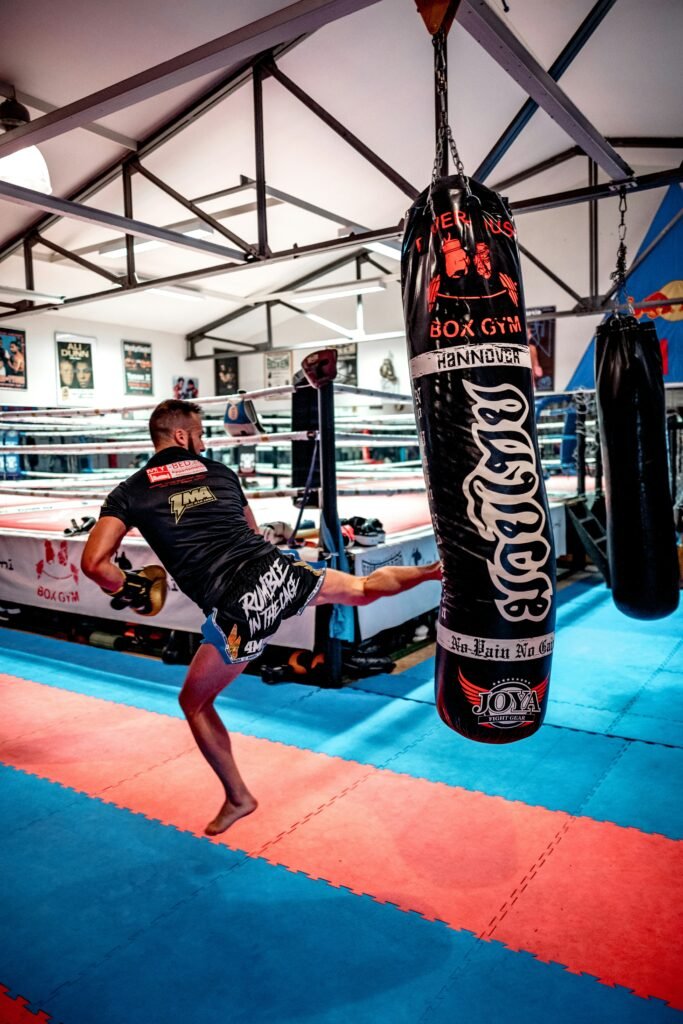Living in an apartment or a small space doesn’t mean you can’t successfully crate train your furry friend! Creating a comfortable crate training environment is essential for your dog’s well-being and your peace of mind. In this article, we will explore practical tips and strategies to make crate training a positive experience, even in limited living spaces. With a little creativity and patience, you can ensure that your dog feels safe and secure while learning to love their crate. So, let’s dive into the world of crate training in apartments and small spaces!

This image is property of images.unsplash.com.
Choosing the Right Sized Crate
When it comes to crate training your dog in an apartment or small space, the first step is to consider the size of your furry friend. The crate should be large enough to accommodate your dog comfortably. Your dog should be able to stand up, lie down, and turn around easily inside the crate. It’s important to choose a crate that provides enough room for your dog’s stretch and movement without being too restrictive.
To determine the appropriate crate size for your dog, you can measure your dog’s height and length and choose a crate that provides a few inches of extra space. Keep in mind that puppies will grow, so it’s advisable to choose a crate that can accommodate your dog’s future size.
Placing the Crate in an Ideal Location
Once you have the perfect crate for your furry friend, it’s time to find the ideal location for it in your apartment. Look for a quiet area that is away from excessive noise or foot traffic. Dogs, especially during crate training, need a serene environment to feel safe and relaxed.
Additionally, proper ventilation is essential for your dog’s comfort. Make sure the chosen location has ample airflow. Adequate ventilation is crucial for maintaining a healthy and comfortable environment for your dog inside the crate.
Consider the proximity of the crate to your bedroom, especially if you plan to have your dog sleep in it at night. Having the crate nearby will provide your dog with a sense of security and make nighttime more comforting.

This image is property of images.unsplash.com.
Making the Crate Cozy and Inviting
To encourage your dog to embrace the crate as a positive space, it’s essential to make it cozy and inviting. Place a soft bedding or crate pad inside the crate to provide a comfortable surface for your dog to rest on. This will not only make the crate more inviting but also provide cushioning and warmth.
Adding familiar scents can also help your dog feel more at ease in the crate. Place your dog’s blanket or a toy with their scent inside the crate. The familiar smell will provide a sense of security and familiarity, making the crate a more comforting space for your furry friend.
In addition to comfort, it’s important to provide appropriate chew toys or puzzle feeders to keep your dog entertained while inside the crate. This will help alleviate boredom and prevent destructive behaviors that can arise from confinement.
Creating a Positive Association
Introducing the crate gradually and positively is crucial for successful crate training. Start by leaving the crate door open and allowing your dog to explore it at their own pace. Place treats and praise around and inside the crate to encourage your dog to associate positive experiences with the crate.
Rewarding your dog’s calm behavior in the crate is another effective way to create a positive association. When your dog enters the crate willingly or remains calm inside, offer treats and verbal praise. This will reinforce the idea that the crate is a safe and desirable place for your dog to be.
On the other hand, it’s important to avoid using the crate as a form of punishment. The crate should always be associated with positive experiences. Using it as a way to discipline your dog can lead to fear or anxiety towards the crate, making the training process more difficult.
To further reinforce positive associations, consider using the crate during mealtime or nap time. Feeding your dog in the crate or providing comfortable bedding during nap time will create positive moments within the crate and strengthen your dog’s association with it.

This image is property of images.unsplash.com.
Establishing a Routine
Consistency is key when it comes to crate training. Designing a consistent schedule will help your dog adjust to the crate and establish a routine. Start by using the crate for short periods, gradually increasing the duration. This will help your dog gradually become comfortable with spending longer periods inside the crate.
Remember to take your dog outside for bathroom breaks before and after crate time. Regular bathroom breaks are important to avoid accidents and help your dog associate crate time with relieving themselves outdoors.
In addition to crate time, be sure to provide regular exercise and mental stimulation outside of the crate. Dogs need physical and mental stimulation, so allowing them ample time to play, walk, and engage in interactive activities will contribute to their overall well-being and help make crate time more manageable.
Managing Separation Anxiety
For some dogs, being confined to a crate can trigger separation anxiety. If your dog shows signs of distress or anxiety when in the crate, it’s important to address these issues. Gradually increasing the time spent in the crate can help reduce separation anxiety. Start with short intervals and gradually extend the time as your dog becomes more comfortable.
Calming aids such as pheromone sprays or soothing music can also help alleviate anxiety in the crate. These aids can create a relaxing atmosphere and provide a sense of comfort for your dog during crate time.
In severe cases of separation anxiety, it may be necessary to seek professional help or utilize behavior modification techniques. A professional trainer or veterinarian can provide guidance and support in managing and overcoming separation anxiety in dogs.
Avoiding Common Mistakes
When crate training your dog in an apartment, it’s important to avoid common mistakes that can hinder the training process. First and foremost, never force your dog into the crate. This can create negative associations and lead to resistance or fear of the crate.
Avoid leaving your dog in the crate for extended periods, especially during the day. Dogs need regular exercise, mental stimulation, and social interaction, so prolonged confinement can be detrimental to their well-being. Use the crate as a training tool, not as a substitute for proper exercise and mental stimulation.
Lastly, it’s important to remove your dog’s collar or harness while they are inside the crate. Leaving your dog’s collar or harness on can pose a safety risk, as they may get caught on the crate or other objects, potentially causing harm.
Troubleshooting Crate Training Issues
During the crate training process, you may encounter some common challenges. Whining or barking in the crate is a frequent issue that dog owners face. To address this, it’s important to remain patient and avoid rewarding the behavior. Ignoring the whining or barking and only offering attention and treats when your dog is calm and quiet can help discourage this behavior.
Accidents inside the crate can also occur, especially during the initial stages of crate training. To tackle this issue, make sure you are taking your dog outside for regular bathroom breaks and providing ample opportunities for them to relieve themselves. Accidents can sometimes be avoided by establishing a consistent schedule and ensuring your dog has relieved themselves before crate time.
If your dog shows signs of stress or fear in the crate, it’s important to address these issues with patience and positive reinforcement. Gradually introducing your dog to the crate, providing comfort and reassurance, and seeking professional guidance if necessary can help alleviate crate-related stress or fear.
For persistent problems or challenges in crate training, it may be beneficial to seek professional guidance. A professional trainer or veterinarian can assess the situation and provide tailored advice and strategies to help overcome any obstacles.
Gradually Increasing Freedom and Independence
As your dog becomes more comfortable and accustomed to the crate, you can gradually increase their freedom and independence. Start by leaving the crate open during supervised periods. This will allow your dog to enter and exit the crate freely, further reinforcing positive associations.
Once your dog is comfortable with free access to the crate, you can allow them short periods of freedom in a confined area of the apartment. This will give them a chance to explore a little more while still having a safe space to retreat to when needed.
Over time, gradually increase supervised freedom in the apartment. Expand their access to different areas, always making sure they can find their way back to the crate if they desire. It’s important to ensure your dog is reliably potty trained before granting them full access to the apartment.
Maintaining a Comfortable Crate Environment
To ensure the crate remains a comfortable and inviting space for your dog, it’s important to maintain a clean and hygienic environment. Regularly clean the crate to prevent odors and bacteria buildup. Remove any waste, debris, or food spills promptly and sanitize the crate as needed.
Bedding or crate pads should be replaced or washed regularly to maintain cleanliness and freshness. Check for any signs of wear and tear in the crate and repair or replace any damaged parts to ensure your dog’s safety.
Proper ventilation and airflow are crucial for your dog’s comfort. Make sure the crate is placed in an area that allows for adequate air circulation. This will help regulate the temperature inside the crate and prevent stuffiness or overheating.
Before leaving your dog in the crate, always check for any potential hazards or items that may pose a safety risk. Remove any choking hazards, electrical cords, or toxic plants from the vicinity of the crate to ensure your dog’s well-being.
By following these guidelines and creating a comfortable and inviting crate environment, you can make the crate training experience enjoyable for both you and your furry friend. With patience, consistency, and positive reinforcement, crate training in apartments and small spaces can be a rewarding and successful endeavor.



